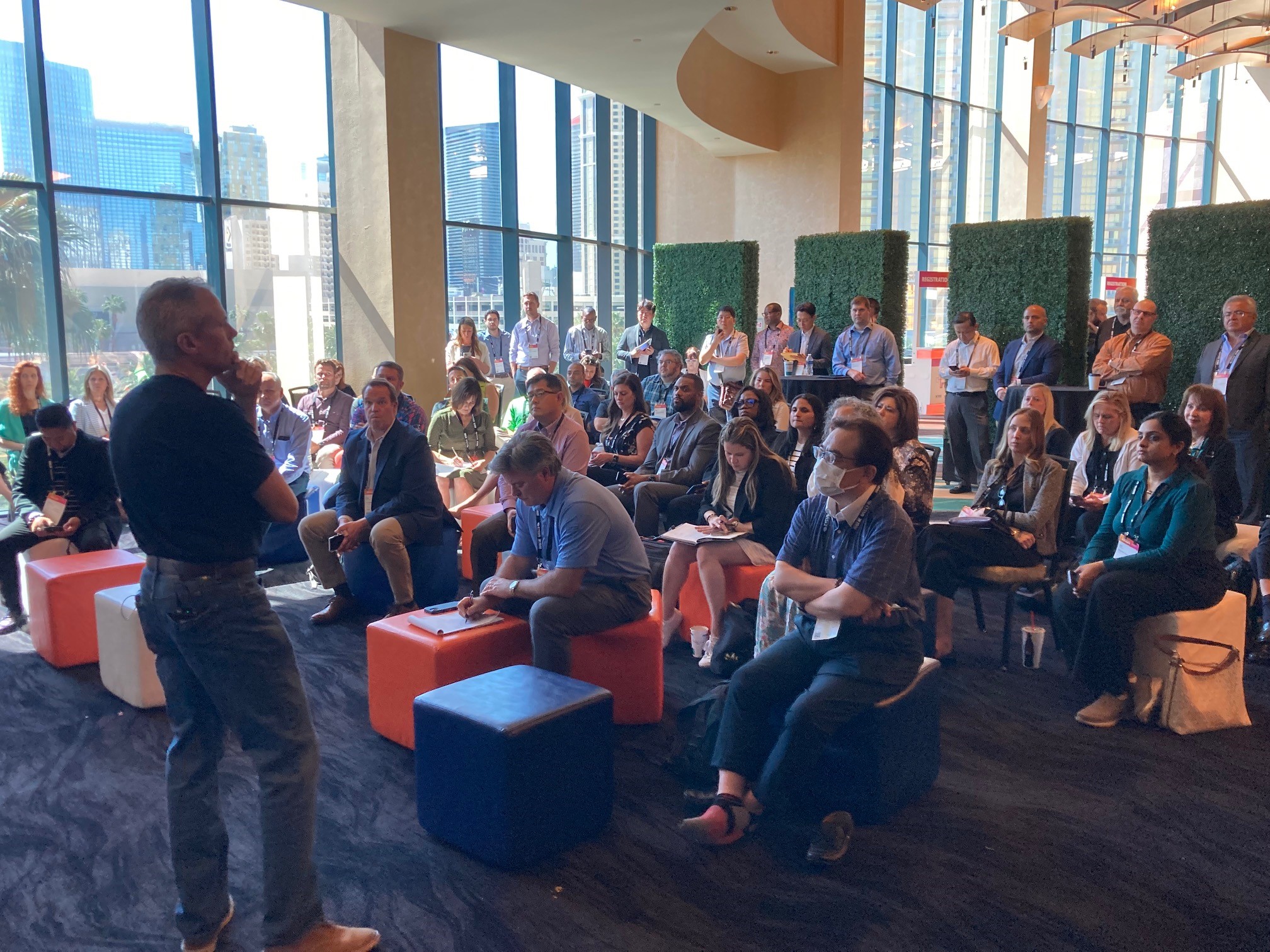ISM World 2024: The Technology to Transform Operating Models

One of the more popular venues at the ISM World 2024 Annual Conference at the MGM Grand in Las Vegas has been the networking lounges, and one of the most anticipated supply management reports each year is The CPO Agenda by The Hackett Group.
So, when the Miami-based business consultancy partnered with Scoutbee, an artificial intelligence (AI)-based knowledge platform, to present a Tuesday session on the 2024 Agenda results, it attracted an overflow gathering to Networking Lounge B.
Chris Sawchuk, principal and global procurement advisory practice leader at The Hackett Group, teamed with Roger Blumberg, senior vice president, global marketing at Scoutbee, and Bart Reekmans, Honeywell CPO, to discuss the findings and how they impact (primarily) technology and talent.
The top three priorities for surveyed CPOs remained unchanged from 2023: (1) improve spend coast reduction, (2) ensure supply continuity and (3) combat inflationary price increases. Those results were in line with those in an informal survey of networking lounge attendees.
However, the No. 5 entry — transform the operating model — caught Blumberg’s eye. It had not appeared in the top 10 in previous years, evidence of how quickly head-count reductions and advanced technologies are impacting the makeup of supply management organizations, the hosts said.
“Your operating model is your organization, technology, information and processes,” Sawchuk said. “You have to rethink that in this environment, and the cost is the constrain that makes us do that. The other element is changing this is AI and generative AI. That’s going to fundamentally change how we do things on a daily basis.”
When an audience member asked for recommendations on steps, such as how to build a workforce organization chart, to transform an operating model, Reekmans said Honeywell explored business process outsourcing for indirect-procurement operations. This provided cost savings and the flexibility to implement technology, he said.
Be prepared to adjust what doesn’t work, Reekmans added: “You might move something out — say, accounts payable — and after a certain time, find that outsourcing it doesn’t work. So, bring it back in. Pivot when it’s needed.”
Technology’s fingerprints were on the No. 8 entry, improving analytics and insights capabilities, Sawchuk said. While data has long been important to businesses, it has become even more so because AI must be fed. “AI needs data to be relevant,” he said.
Another question from the audience: How can supply management practitioners create a competitive advantage for their companies?
Sawchuk’s answer was generating cost savings, but doing so in a way that enables the company to price its products or services more competitively. Added Reekmans, “What I try to convey to my team is becoming a customer of choice. During the pandemic, my experience was that we were not a customer of choice. We did not get what we wanted or priority. It required a retooling of our approach to suppliers.”
Key Takeaways
- Improving spend cost reduction and combating commodity price increases requires a full digital transformation.
- Don’t be afraid to transform a model through trial and error.
- If a company hasn’t begun an AI journey, it needs to start now.
Quote
“We’ve been working to fix the vulnerabilities in the supply chain that (the coronavirus pandemic) exposed. I don’t think that’s going away, because those vulnerabilities and the risk they put to revenue made it to the boardroom. Boards focus on risk. And they have a long-term memory. You might not meet with the board on a quarterly basis, but they will always ask what the procurement organization is doing about risk.” — Sawchuk


